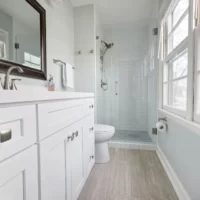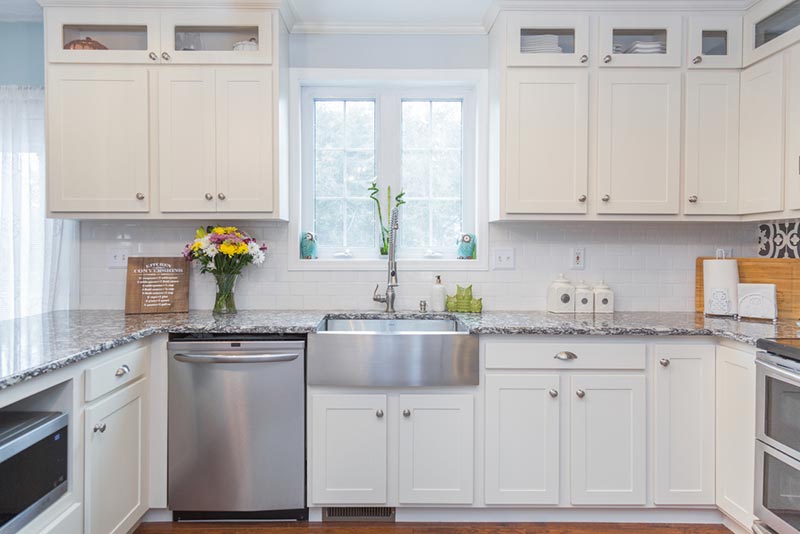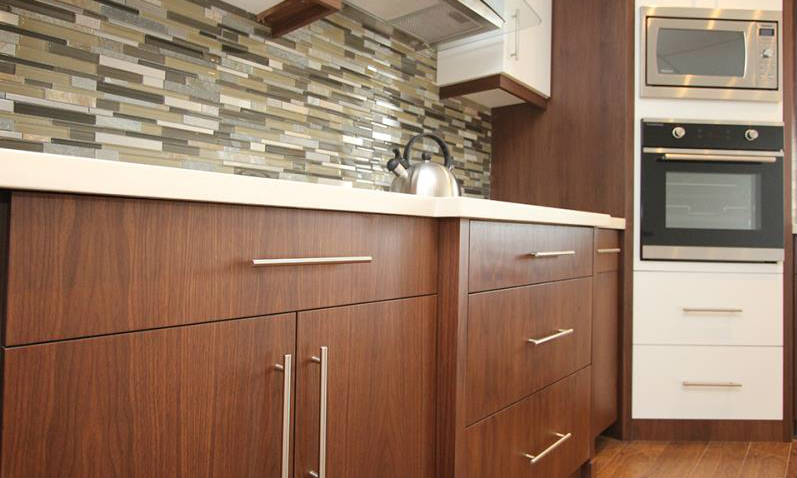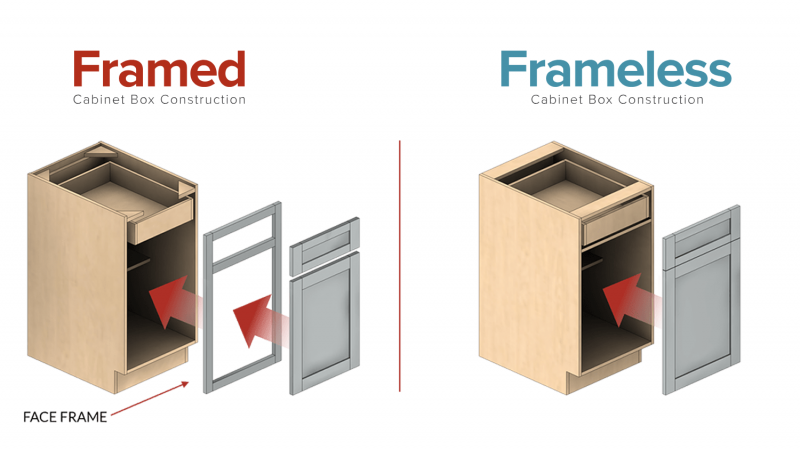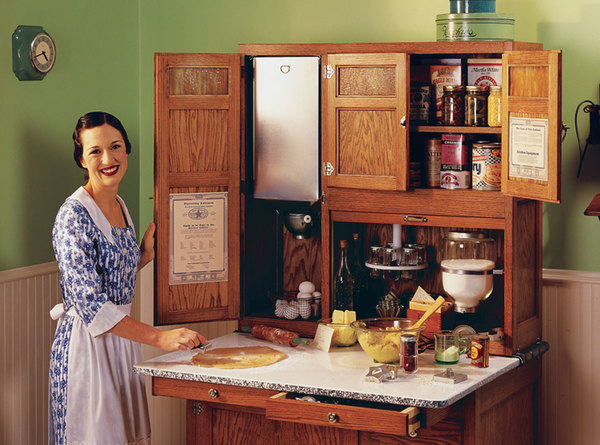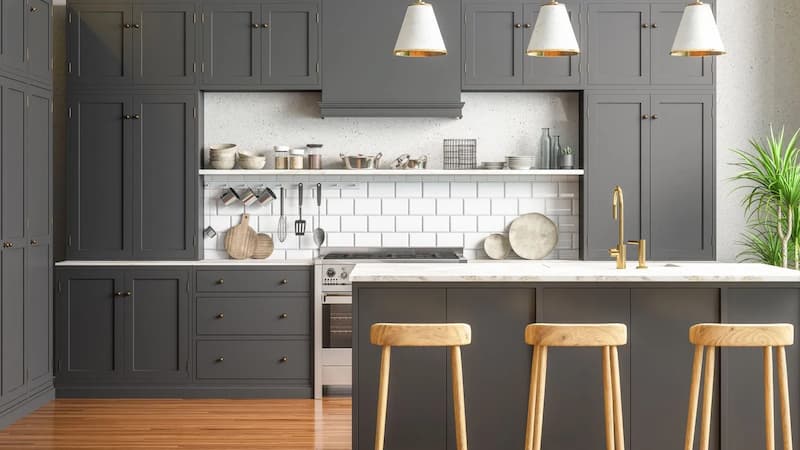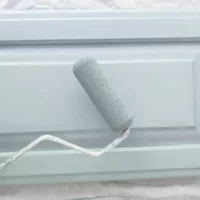Medicines and first aid supplies are as essential as food. Organizing your medicine cabinet doesn’t have to be a daunting task; it can be quick and easy. You also don’t need any special materials. Today I’m going to show you how to organize your bathroom or kitchen cabinets for all your household medicine containers in a practical and simple way.
Table of Contents
What Should Be Stored In The Medicine Cabinet?
Ideally, a medicine cabinet should be reserved for medicines. Make a list of the products you need in stock, including prescription drugs and more general pain relievers, and first aid supplies, so you’re prepared for anything that might come.
If you’re organizing a small bathroom, chances are your medicine cabinet will also store other bathroom essentials — shampoo, shaving cream, makeup, toothpaste, and more. Ideally, it’s best to store it elsewhere, but if that’s not possible, consider assigning it its own storage container or shelf inside the cabinet to keep it separate.
Organize Your Medicine Cabinet in 5 Easy Steps
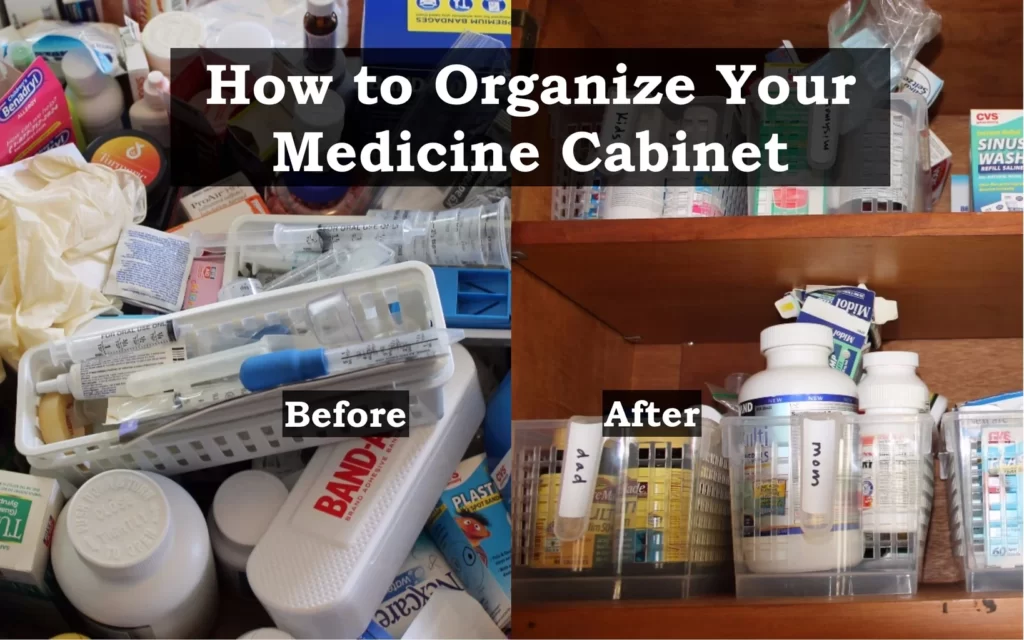
Step 1: Declutter Your Medications
When all your medicines and first aid supplies are hidden behind the cabinet door, it’s easy to forget about them. First, take everything out of the cabinets and put it on a flat surface that will allow you to organize it all. If you have medicines all over your home, collect them too.
Medications you should handle:
- expired medicine
- Broken or half-opened medicines
- Prescription drugs you no longer need
- Medicines that look, smell, or taste different than when you first bought them
- Drugs with no expiry date/unreadable label
Step 2: Dispose Of Your Medicines Properly
After putting aside the medicines you keep, it’s time to get rid of any medicines you don’t need. Pay attention to the disposal instructions on the packaging, if not, you can dispose of it with your household waste.
General guidance on how to properly dispose of medications:
- Prescription Drugs: Remember to Remove Your Personal Information from the Medicine Pack or Container to Protect Your Identity
- Tablets/Capsules: Do not break tablets or capsules. Instead, dissolve it in water and mix it with dishwashing liquid so your kids or pets won’t eat it. Afterward, pour the mixture into a sealable bag and toss it in the trash to keep these medicines out of the wrong hands.
- Potion: If you have more than 250ml of medication, pour it over an absorbent material such as newspaper before throwing it away.
Step 3: Categorise Your Medicines
Everyone has a different way of classifying medications, so think about what makes the most sense for your family. If you don’t know where to start, consider the following categories:
- Family members: Keep individual medications together and label them so they can more easily find and grab what they need.
- Drug Type: You can simplify your classification by grouping your drugs by illness (cough, fever, flu, etc.). Note that prescription drugs should not be shared!
TIP: Separating children’s medicines from adult medicines can help you find the right medicine more easily, especially for those late-night emergencies.
Step 4: Choose An Organization System
Before you start organizing your medication, make sure you store it in the right place. Be sure to check the recommended storage conditions on the packaging. For example “room temperature storage” does not store above 25ºC; refrigerate at 2-8ºC’.
If you plan to keep medicine in kitchen cabinets, make sure the cabinets are not near the side of the sink, stove, or refrigerator. These areas emit heat and steam, which can reduce the effectiveness of the medicine.
Step 5: Maintaining Your Organization System
Now that you’ve painstakingly cleaned out your medicine cabinet, you can implement a system (rather than color coding or labeling) so you can maintain an organized medicine cabinet.
Hang a white or cork board to make the most of the space behind the cabinet door. You can jot down important information for your family to jot down while keeping track of what’s in your medicine cabinet.
Some suggestions on what you can do with it:
- Write down your medication list and expiration date
- Remind yourself or family members of medical appointments
- Make a list of supplements/vitamins you take and when you last took them (so you don’t buy vitamins again!)
- Record the date you last cleaned your medicine cabinet
Final Thoughts
Once you’ve completed these five easy steps, your drug warehouse will be neat and tidy. This system will help you always find the products you need quickly and easily while keeping your medicine cabinet top-notch organized and easy to maintain.








